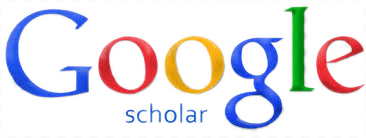JIGSAW TECHNIQUE AND STUDENTS’ READING COMPREHENSION
DOI:
https://doi.org/10.33557/binabahasa.v14i2.1507Keywords:
Jigsaw Technique, Reading, Reading ComprehensionAbstract
The aim of this study is to find out whether or not there is significant effect of using Jigsaw technique on the eighth-grade students’ reading comprehension at Islamic Junior High School Al-Jauharen. The design of the experiment research is a quasi-experimental research with pre-test post-test control group design. There were 64 students involved as the samples in this study. The results indicated that there was significant difference on the students’ comprehension before (M=60.80, SD= 19.69) and after being taught by using Jigsaw Technique (M=78.62, SD=10.08), t(29)=3.926, p= 0.000< 0.05. The results of independent sample t-test also indicated that there was significant difference on the comprehension of the students in experimental group and in control group (p>0.05). In brief, the results implied that there were there was significant effect of using Jigsaw Technique on the students’ reading comprehension.
References
Buscardin, C.K., Muthén, B.O., Francis, D.J., & Baker, E.L. (2008). Early identification of reading difficulties using heterogeneous developmental trajectories. Journal of Educational Psychology, 100(1), 192-208.
Chung, H. V. 2014. A Study of reading comprehension problems in English encountered by first year students of faculty of Vietnamese study at Hnue. Retrieved from https://www.academia.edu
Kessler, C. (1992). Cooperative languange learning. Prentice Hall.
Larsen-Freeman, D.2000. Techniques and principles in language teaching. Oxford University Press
Lyon, G.R. (1998). Overview of reading and literacy initiatives. National Institute of Child Health and Human Development.
Meng. J. (2010). Jigsaw cooperative learning in English reading. Journal of Language Teaching and Research, 1(4), 501-504.
Moats, L. C. (2004). Teaching reading “is” rocket science: What expert. teachers of reading should know and be able to do. American Educator, 44(2), 4-9.
OECD. (2016). PISA 2015 results (Volume I): Excellence and equity in education. OECD Publishing. http://dx.doi.org/10.1787/9789264266490-en.
Teixeira, J.V. (2012). Developing reading skills using different types of text. E-Teals: An E-Journal of Teacher Education And Applied Language Studies, (3), 15-29.
Tewskbury,B. (2016). The jigsaw technique. Retrieved from https://serc.carleton.
edu/NAGTWorkshops/coursedesign/tutorial/jigsaw.html
Downloads
Published
Issue
Section
License

Jurnal Ilmiah Bina Bahasa by http://journal.binadarma.ac.id/index.php/binabahasa is licensed under a Creative Commons Attribution-ShareAlike 4.0 International License.





